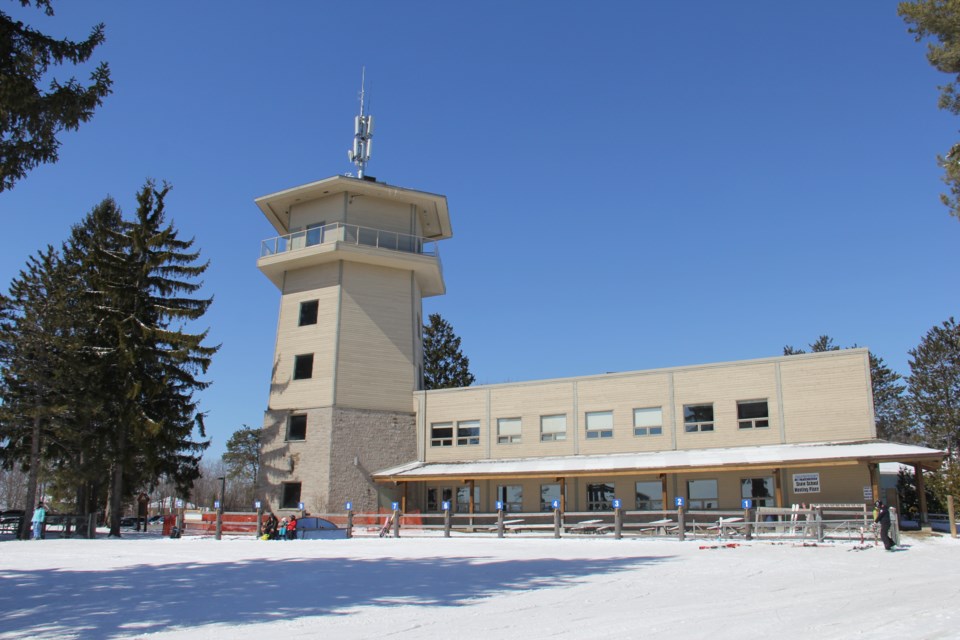“Rooted” is all about the people and places that make us proud to call our community home.
-----
Since 1972, the North Bay-Mattawa Conservation Authority has worked to balance human needs with the needs of the natural environment on a watershed basis.
The group will be celebrating its 50th anniversary next year and was formed by a provincial order in council at the request of nine municipalities; Bonfield, Calvin Twp, Chisholm Twp, East Ferris, Mattawa, Mattawan Twp, North Bay, and Papineau-Cameron Township, (Callander and Powassan requested to join later) who wanted a local conservation authority to provide science-based advice and leadership in conserving, restoring, developing and managing renewable natural resources on a watershed basis.
Sue Buckle is the Manager, Communications and Outreach and she says, “We are a non-profit organization formed at the request of regional municipalities. The 12-member Board, which governs NBMCA, is composed of members appointed by 10 member municipalities. Members can be elected officials or private citizens; all are appointed by municipal councils.”
Buckle says, “The role and responsibilities of Conservation Authorities are being reviewed and categorized by the province as mandatory and non-mandatory. Over the next few years, there may be some shifts in how Conservation Authorities administer and deliver these programs. But for now, NBMCA delivers specific programs and services.”
These include forecasting and warning of floods, protecting people and property from natural hazards by issuing permits for development and other activities around wetlands, watercourses, and steep slopes.
As well they provide advice and/or comments to municipalities on certain planning matters and manage more than 750 hectares of NBMCA owned lands, including 15 Conservation Areas and 75 km of trails.
Buckle says they also provide information on, “science-based monitoring water quality in area lakes, rivers and streams, permitting and inspecting onsite sewage (septic) systems in Nipissing and Parry Sound Districts, putting policies in place to protect the water sources of five municipal drinking water systems (Callander, Mattawa, North Bay, Powassan, and South River), and delivering education, outreach and stewardship activities and events.”
It is a large service, which NBMCA provides to an even larger area with three acts to abide by.
“Under the Conservation Authorities Act, NBMCA delivers all of its programs and services in over 2,900 square kilometres, an area that is based on identified watersheds within the Lake Nipissing and the Ottawa River Basins,” says Buckle.
“Under the Building Code Act, NBMCA delivers the on-site sewage system program in all of the areas mentioned above as well as within the Parry Sound District. NBMCA’s on-site sewage system office in Parry Sound serves the west Parry Sound area. Under the Act for Clean Water, NBMCA administers the Drinking Water Source Protection Program to ensure the sources of municipal drinking in Callander, Mattawa, North Bay, Powassan, South River are protected from contamination through a Source Protection Plan.”
Buckle says it is important to manage the water resources on a watershed for several reasons.
She says, “Water flows in lakes, rivers, streams and underground aquifers ignoring municipal boundaries. Everyone lives downstream from someone else; on-the-ground and in-the-water activities in one municipality can affect those who live further downstream or across the shore. Conservation Authorities believe an integrated watershed management approach is the best way to protect water and related resources.”
As well, Buckle says Integrated Watershed Management (IWM) is a science-based process of managing human activities and natural resources on a watershed basis.
She says, “taking into account social, economic and environmental issues, as well as community interests in order to manage water resources sustainably, maintaining the integrity of aquatic ecosystems both now and into the future.
And there are several ways they are able to manage this huge workload.
“NBMCA does this through regulations and permits, science-based research and monitoring, policies, education, and ownership of land for public protection, preservation, appreciation, and recreation,” says Buckle.
“NBMCA provides leadership and works collaboratively with municipalities, environmental groups, volunteers, as well as provincial and federal agencies. NBMCA coordinates watershed planning, implements resource management programs, and promotes conservation awareness in cooperation with others.”
For an area that is rich in natural resources such as ours, it is a comfort to know there are devoted people who are dedicated to maintaining and managing those resources and Buckle encourages people to learn more about NBMCA by visiting, www.nbmca.ca. You can also follow NBMCA on Facebook and Twitter @theNBMCA and Instagram nbmcainfo.
If you have a story idea for “Rooted” send Matt an email at [email protected]



